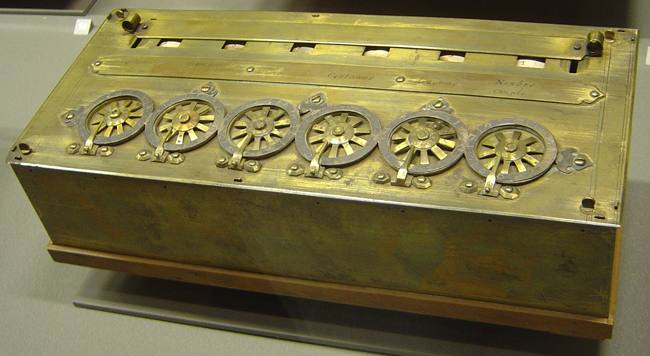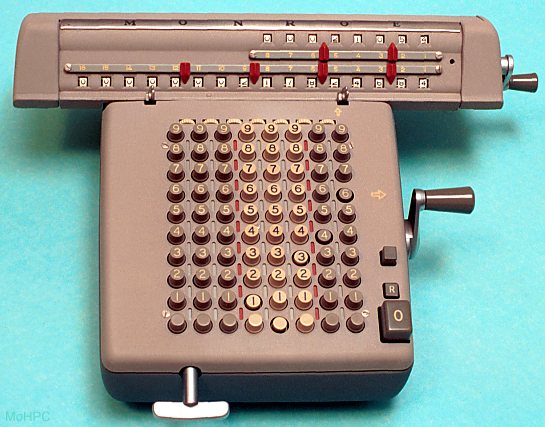Vanishing Mathematics
Today, mathematics vanishes. The University of Houston's College of Engineering presents this series about the machines that make our civilization run, and the people whose ingenuity created them.
The last seventy years feel like one long struggle with calculation. When we learned school arithmetic it seemed we had all the means we'd ever need for computing numbers. And, this is important, those algorithms meant doing some of the arithmetic in our heads.
The earth seemed to shift when I went to college and got my first slide rule. What a wondrous device! But it couldn't add or subtract, nor could it show where the decimal point went after we'd done a series of calculations. Next, summer jobs on road survey crews. That took endless add/subtract arithmetic, done on hand-cranked desk calculators -- machines that still resembled the one built by philosopher Blaise Pascal in 1645.

My first real engineering job involved a lot of failure analysis, more mind-numbing arithmetic, now served by both slide rules and electrically-powered adding machines. When I finished graduate school, most big universities had primitive digital computers. But one still had to speak machine language to them; and students seldom got near them.
Earth again shifted on its increasingly shaky axis when Fortran came into wide use in the '60s. Fortran meant Formula Translating. Programming in Fortran was a bit like speaking to the computer in English instead of its native hexadecimal tongue. (An 11x14 stack of punch-card-generated, accordion-pleated paper still sits on my desk -- 40-year-old calculations I just can't bring myself to put in the recycle bin where they belong.)
A new thread arose in the early '70s: Pocket calculators were the first fruit of the new integrated circuit. Suddenly they did what both slide rules and adding machines had done -- very fast, very simple. As Fortran gave way to all kinds of better languages, the computing center morphed into the desktop PC. The line between calculator and computer blurred.
From the '60s through the '90s, we still had to tell computers how to solve the equations we used. The next sea change was software into which we could simply type our equation. It finds a solution method and provides the answer. It even gives visual versions of some reality that we hope to describe with our equation. Today we have forms that even choose the equation for us.
And the math finally becomes completely invisible. So much of our physical equipment has long since suffered a similar fate. We once took things apart to fix them. Now we read labels warning us, "To be opened only by a factory representative." The price of convenience is loss of control, loss even of understanding. And we wonder: How far can we trust what we cannot follow?
So, back to those old algorithms of arithmetic: Best not to forget them, or that great computer between our ears. Mental arithmetic is a last bastion of human empowerment. The back of an envelope can still tell us what all our electronics can overlook.
I'm John Lienhard at the University of Houston, where we're interested in the way inventive minds work.
See the Wikipedia articles on calculators, on slide rules, and on Pascal's calculator. See also Episode 1703 on early IBM computers. Two of the equation-solving software systems are Mathematica and MatLab. My thanks to Lewis Wheeler and Keith Hollingsworth, UH Mech. Engr. Dept, for their very helpful counsel.

Pascal's 1652 calculating machine. (Image courtesy of Wikipedia Commons.
